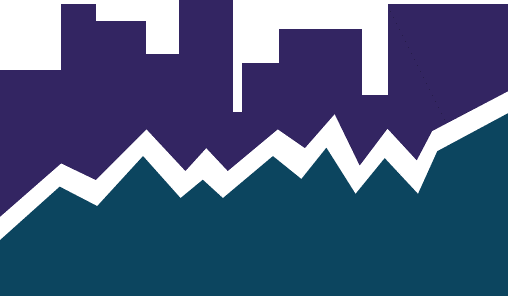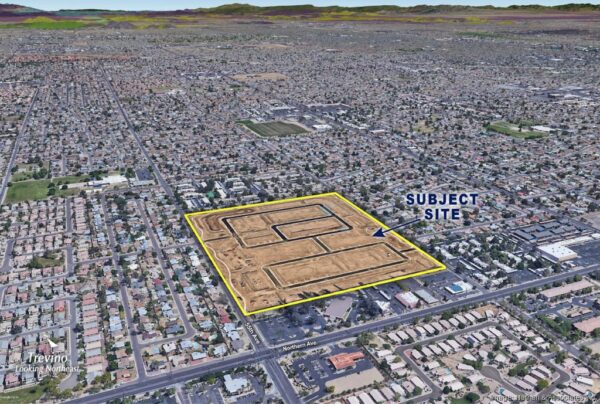The Monday Morning Quarterback
A quick analysis of important economic data released over the last week
By Elliot D. Pollack & Co. | Rose Law Group Reporter
There are lots of conflicting economic data that the public and experts are trying to evaluate – negative GDP and high inflation while the labor market is still strong. For this week’s MMQ we have turned to the Blue Chip forecasters to see where they stand on the economy.
The Blue Chip Economic Indicators (BCEI) is a monthly survey that polls America’s top business economists, collecting their forecasts of U.S. economic growth, inflation, interest rates, and a host of other critical indicators of future business activity. The economists are employed by some of America’s largest and most respected manufacturers, banks, insurance companies, and brokerage firms. Blue Chip Economic Indicators provides forecasts for this year and next from each panel member, plus an average or consensus of their forecasts for each variable.
To begin with, the Blue Chip forecasters don’t expect a recession in 2022 and place a probability of 53% on one emerging next year though they have become a little more pessimistic from last month. Thus far in 2022, the consensus has lowered its forecast for full-year GDP growth in each monthly survey for both this year and next. In the latest survey, the consensus expects GDP to grow a tepid 1.5% this year and slow to a near-recession pace of 0.7% in 2023. In the consensus quarterly forecasts, there are no quarters in which GDP declines over the six-quarter horizon (to the end of 2023), although the consensus expects well below-trend GDP growth over this period. However, the bottom 10 forecasters are more pessimistic. They see quarterly declines in GDP in the current quarter and in each of the subsequent four quarters with full-year GDP falling in 2023.
Standing in sharp contrast to slowing activity, elevated inflation, and rising recession concerns is the rock-solid labor market, which is clearly not in a recession. The unemployment rate is currently at a 50-year low of 3.5%, having fallen another 0.1%-point in July. And employers have been adding jobs at a rapid clip with total payrolls up 528,000 in July, a pace that exceeded the 461,000 average increase in the first six months of this year. The panel consensus estimates that a 0.8%-point increase in the unemployment rate to 4.3% would signal the advent of a recession. The consensus expects little change in the unemployment rate in 2022 from its current level with the rate rising to average 4.0% in 2023. Neither appears to indicate recessionary conditions.
Regardless of whether the US economy is currently in a recession, leading recession indicators are increasingly flashing yellow. The yield curve is one of the most popular recession leading indicators. Currently, the 10yr/3mo yield curve is still positively sloped, though it has flattened quite a bit lately, and so is not signaling a recession. However, the BCEI consensus anticipates this curve to invert slightly next quarter and to remain inverted for the first three quarters of 2023, which would be a clear signal of elevated recession risks.
A key factor for the economy and Fed policy going forward is the path for inflation. Inflation as measured by the GDP price index unexpectedly accelerated in Q2, rising 8.7% on top of an 8.2% rise in Q1. Expectations were for the pace of inflation to have slowed in Q2; the 8.7% quarterly increase was the largest since Q1 1981. BCEI forecasters expect that the Q2 inflation rate will be the peak for the current episode with the rate falling over the six-quarter forecast period (to end-2023).
A worrisome feature of recent releases is that inflation appears to be broadening. The acceleration in inflation immediately after the pandemic lockdown mainly reflected price increases for products that were temporarily boosted by the reopening of the economy. However, inflation pressures more recently have spread across the economy to areas such as shelter where they may be more persistent. This persistence could be reinforced by the observed acceleration in wage/compensation growth. Unit labor costs surged 10.8% in Q2 on top of a 12.7% rise in Q1. This was the third double-digit increase in ULC in the past four quarters and could provide a stimulus to prices going forward.
Not all of the inflation news is gloom and doom, however. The Commodity Research Bureau (CRB) spot commodity price index is down nearly 9% from early-May highs with the GSCI Agriculture/Livestock Price Index off more than 18%. The price of WTI oil has fallen nearly 25% since the first week in June and retail gasoline prices have declined every day since June 16, down more than 20%. Indeed, the unchanged reading for the headline CPI in July was due mostly to a 7.7% month over month decline in gasoline prices
The Fed still tightening. With inflation well above the 2% target and rising, the Fed has continued an aggressive tightening course with a second consecutive 0.75% increase in the federal funds rate (FFR). Both the FFR futures market and BCEI forecasters look for the Fed to accomplish most of its heavy lifting by the end of this year with the FFR reaching a cycle high of 3.72% in Q4 2022 or Q1 2023. The Fed’s current target range for the FFR is 2.25%- 2.50% with at least another 0.50% increase expected to be delivered at the September 20-21 FOMC meeting. Both the Fed and BCEI forecasters estimate that the neutral FFR, the level that is neither restrictive nor stimulative, is around 2.50%. So, monetary policy is set to become restrictive while previous interest rate hikes were just removing its accommodation. Can the Fed rein in inflation without causing a recession? That’s the big question.
U.S. Snapshot:
- The Blue Chip Economic Indicators panel lowered their forecast for both 2022 and 2023 once again in August. As GDP fell unexpectedly in the second quarter, talk of a recession continued to gather steam. The panel still does not believe there will be a recession in 2022, but the probability of one in 2023 rose to 53%. The labor market remains very tight and the Fed is expected to continue increasing the Federal Funds Rate to combat high inflation. Overall, the panel expects growth of 1.5% in 2022 and 0.7% in 2023.
- Inflation, as measured by the CPI, “only” increased 8.5% from a year ago and prices were flat from last month. The decline was due a drop in gasoline prices. Core-inflation (less energy and food) increased by 0.3% for the month and 5.9% for the year. While certain prices are moving in the right direction, shelter costs remain high and will continue to put pressure on prices.
- Productivity fell at a 4.6% annualized rate in the second quarter. This was the second consecutive quarterly drop. However, labor costs increased 10.8% on an annualized basis. The increase in labor costs is outpacing the Fed’s target, significantly adding to their already difficult inflation management task.
- Consumer sentiment improved in the first half of August to 55.1%. It has continued to improve from the low of 50% in June. Expectations of year-ahead inflation fell to 5%. This was above the 4.6% reading of a year ago.
Arizona Snapshot:
- June’s total taxable sales grew 8.3% from a year ago in Arizona, outpacing Maricopa County’s growth rate of 8.1%. Retail sales increased 5.6% and 2.8% in Arizona and Maricopa County, respectively.
- The number of single family homes sold in July across Greater Tucson declined 24.5%, according to the Tucson Association of Realtors. The inventory of homes has increased 53.7% during the same time period.












